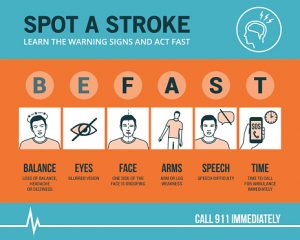 May is American stroke month, and we at Bel Marra recognize the impact a stroke may have on a person’s life and the lives of their loved ones. The results of a recent survey concluded that most Americans do not know the common signs of a stroke, which is something we take great issue with. So, in order to give you all the information you need, we have provided you articles covering the topics of a massive stroke, stroke rehabilitation, and how to recover from a stroke. Insomnia is also a possible risk factor and we have provided you information on that subject as well. Experiencing a stroke can be a devastating experience, but your friends at Bel Marra believe that staying informed is your best defense.
May is American stroke month, and we at Bel Marra recognize the impact a stroke may have on a person’s life and the lives of their loved ones. The results of a recent survey concluded that most Americans do not know the common signs of a stroke, which is something we take great issue with. So, in order to give you all the information you need, we have provided you articles covering the topics of a massive stroke, stroke rehabilitation, and how to recover from a stroke. Insomnia is also a possible risk factor and we have provided you information on that subject as well. Experiencing a stroke can be a devastating experience, but your friends at Bel Marra believe that staying informed is your best defense.
Massive stroke: Signs, treatment, and recovery tips
When the blood flow to an area of your brain is inhibited, you experience a stroke. The lack of blood causes your brain cells to starve for oxygen, ultimately resulting in their death. A massive stroke, however, is more serious and results in severe brain damage or death. By massive, we mean that a huge area of the brain was affected and a lot of damage was done.
Advertisement
According to the Centers for Disease Control and Prevention, strokes are the third leading cause of death in the U.S. This is unfortunate, as strokes are largely preventable through a healthy lifestyle. However, we usually don’t take preventative measures until it’s too late. Continue reading…
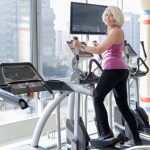 Exercising leads to future benefits for stroke patients
Exercising leads to future benefits for stroke patients
In our younger days, we were more adventurous, taking the path least travelled just to see where it led. We were more active, having the energy to stay up late with our friends and loved ones. While it is understandable that this level of activity can only be sustained in our youth, perhaps staying active means something different as we age—being more subdued yet not sedentary.
One of the simple facts of life is that as we age, we become more susceptible to health issues, with strokes being some of the most devastating, having an impact immediately and remaining present thereafter. Yet a new study has found that people who exercised regularly before their stroke had lowered the odds of disability after.
The benefits of physical actively translate to all aspects of life. The Centers for Disease Control and Prevention have gathered data on the positive effects that exercise provides, especially for seniors. Continue reading…
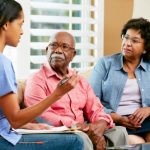 How to recover from a stroke quickly and naturally
How to recover from a stroke quickly and naturally
Strokes can be really frightening and recovering from one can be a lengthy process. Many patients and their family members are anxious to learn how to recover from a stroke quickly and without complication.
It can be overwhelming when someone who is physically and socially active suddenly loses the ability to walk and talk clearly. Since strokes are a leading cause of long-term disability, understanding them and the recovery process is important. A stroke impairs blood supply to the brain, and this is what can lead to speech and mobility problems.
The specific type of issues a stroke victim faces will depend on the area of the brain that is affected by the stroke. About 25 percent of strokes occur in someone who has already had a stroke. Approximately 40 percent of stroke sufferers experience moderate to severe impairments. These impairments require special care.
Some people who have a stroke experience paralysis on one side of the body, problems sensing pain, difficulty understanding and talking, and can become overly emotional. Continue reading…
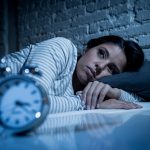 Insomnia increases risk for heart disease and stroke: Study
Insomnia increases risk for heart disease and stroke: Study
Lying awake in bed and not being able to fall asleep is a relatively common occurrence for most people, especially those with insomnia. Insomnia is something people don’t give much attention to, but according to a new study published in the European Journal of Preventive Cardiology, it is associated with an increased risk of heart attack and stroke.
We spend nearly a third of our lives sleeping, which speaks to the importance of it. In this modern technological world, there are many distractions and stimulants that are designed to keep us awake. It’s reported that approximately one-third of the general population of Germany suffer from insomnia symptoms, according to study author Qiao He of the China Medical University.
“Researchers have found associations between insomnia and poor health outcomes,” continued Qiao He. “But the links between insomnia and heart disease or stroke have been inconsistent.” Continue reading…
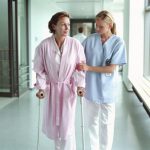 Stroke rehabilitation: Arm and hand exercises for stroke patients
Stroke rehabilitation: Arm and hand exercises for stroke patients
Advertisement
Stroke rehabilitation often involves exercises to improve post-stroke recovery. This is because many motor skills can become affected after a stroke depending on what area of the brain is affected. For example, patients may need to redevelop their ability to walk or even use their hands.
Stroke rehabilitation is often conducted alongside a physiotherapist who will work closely with you to improve mobility. They may also provide you with exercises to complete at home in order to boost your abilities and ensure you become stronger more quickly.
Rehabilitation exercises are often repetitive in nature. This is because, in order for the brain to rewire itself, these activities must be repeated over and over to teach the brain what to do. This process is known as neuroplasticity.
The type of rehabilitation you perform is based on a few different things, including stroke severity, the part of the brain that was affected, the impact of the stroke on your mind and body, your general health, and how long you are able to work on your recovery. Continue reading…
